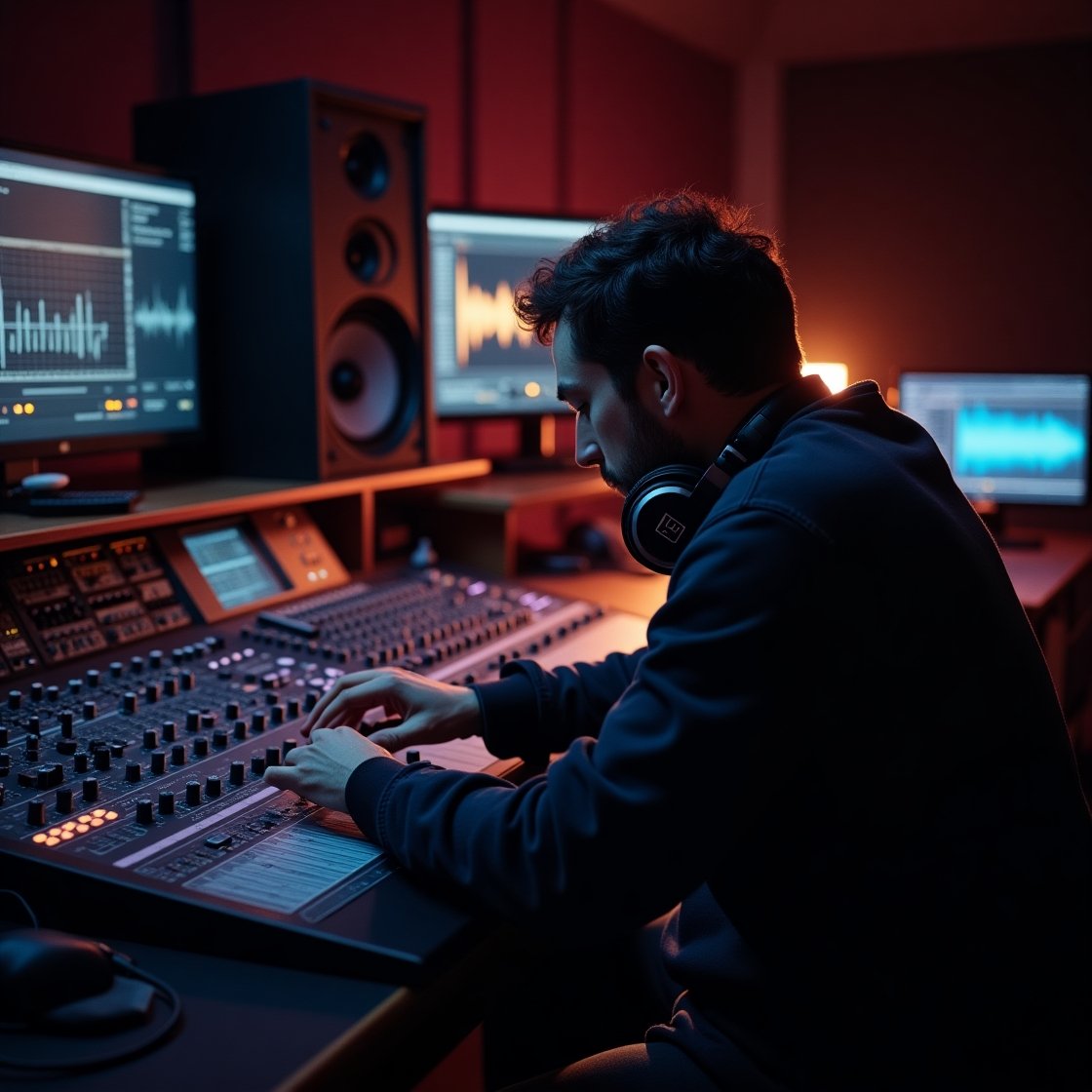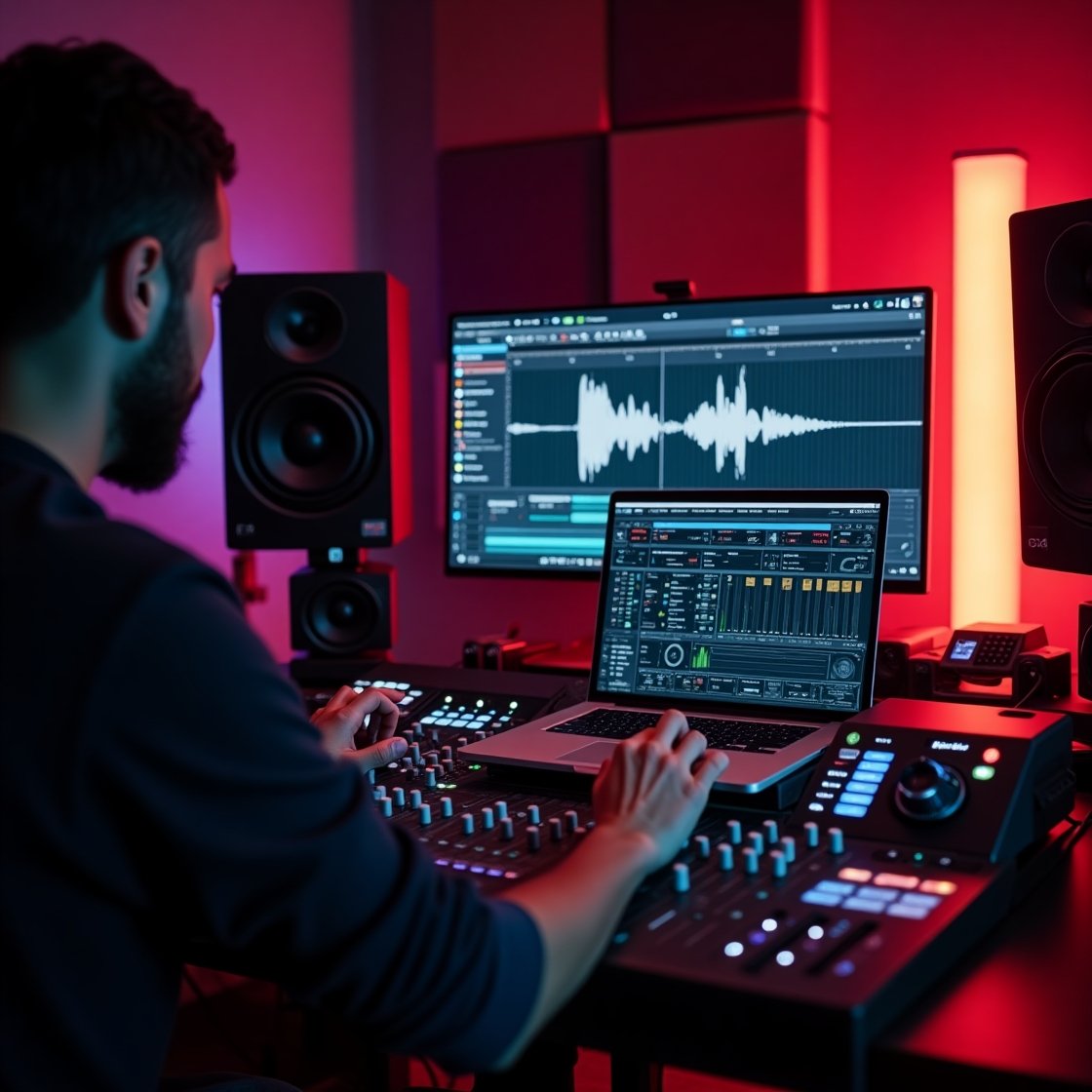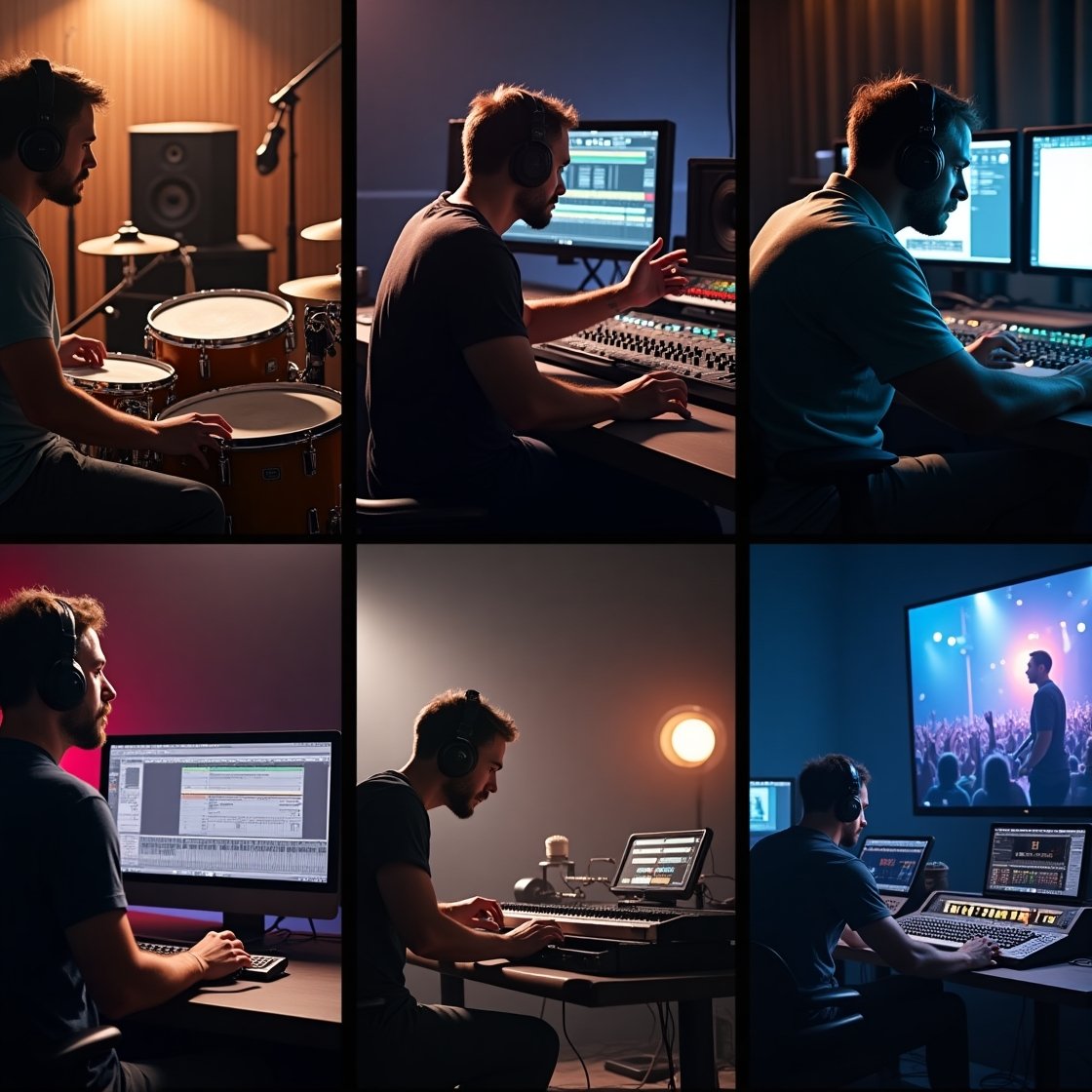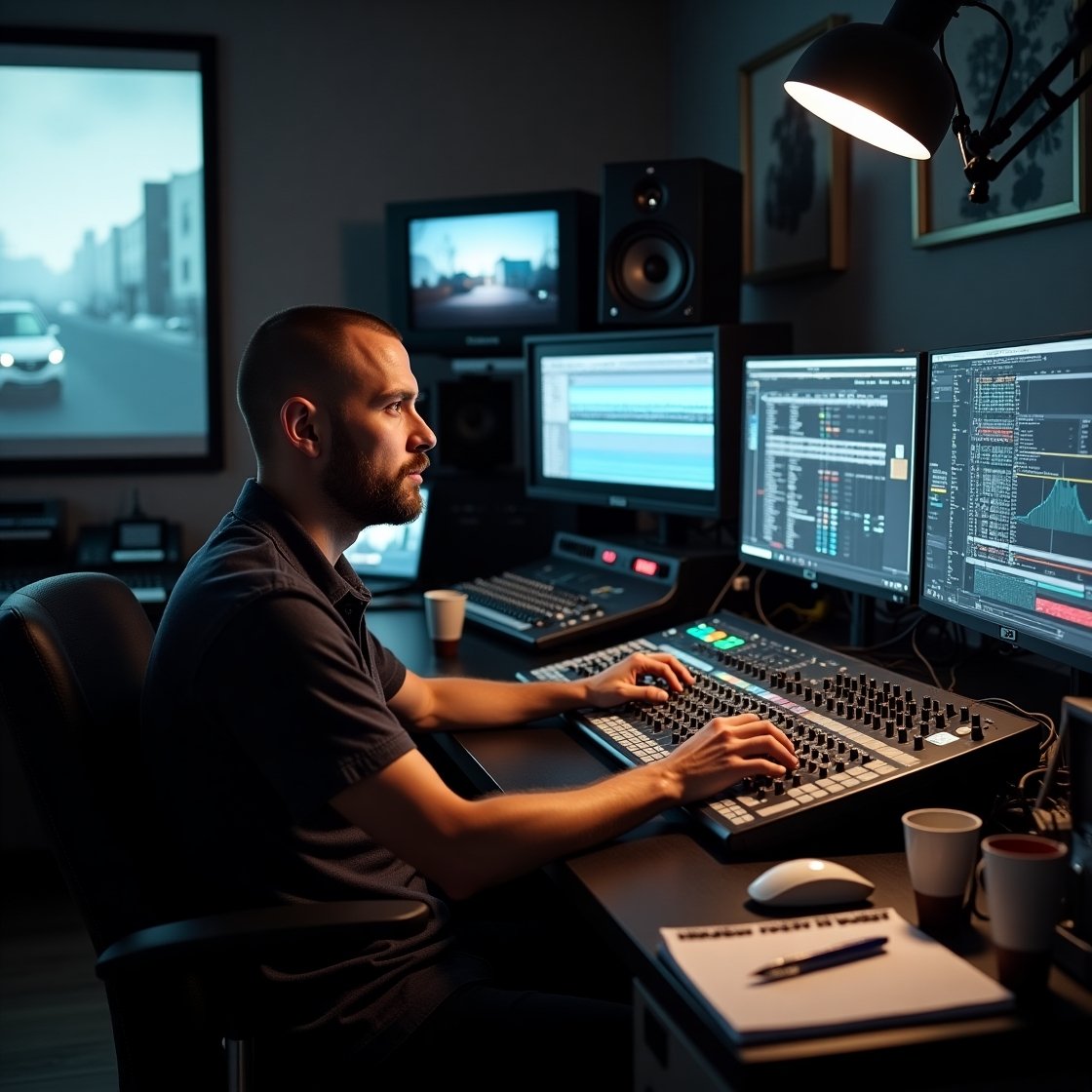What is audio engineering: Post Production Power
What is audio engineering

From my own journey in the audio engineering world, I’ve learned that this profession blends both creativity and precision. It’s not just about adjusting sound levels or working behind a mixing board, it’s about understanding the scientific, aesthetic, and technological layers of sound. Every step from manipulating to record and reproducing requires a solid grip on the principles of acoustic, electrical, digital, and electronic systems. Early in my career, I was fascinated by how the process of applying these concepts could completely reshape the emotional impact of music, voices, or ambient sounds.
In post-production, the deeper aspects of audio come alive. Fine-tuning audio elements in a studio taught me how each frequency, effect, and layer serves a purpose in final production. Whether it’s a cinematic soundtrack or a podcast, the backbone of great sound lies in the engineer’s ability to shape and enhance. Through countless hours in post, I’ve found that mastering audio engineering means not only hearing sound, but also deeply understanding how to bring it to life using every tool both analog and digital that modern audio work demands.
What Audio Engineers Actually Do

In my years working alongside audio engineers, I’ve learned that their job isn’t just about turning knobs, it’s a creative and highly technical role that shapes the very feel of music, film, and television. Whether in music recording studios, movie theaters, or live theater, engineers are responsible for capturing, mixing, and reproducing sound using advanced electronic audio equipment. This field is incredibly broad, covering different settings from radio broadcasting and film production to colleges, universities, and even teaching audio engineering. They often work with artists, clients, and sound designers, making their role essential in all types of media channels.
When I assisted in live sound systems at a venue, I saw firsthand how vital equalizers and control devices were in shaping sound output. Engineers also specialize in using computer software and hardware to record, edit, and manipulate captured audio data. This includes layering effects like reverb, delay, or distortion to create movie soundtracks or commercial jingles that match the intended purpose. Here are some of their core responsibilities:
- Use of mixing techniques like equalization (EQ) and compression to shape timbre of each instrument, voice, or track
- Apply dynamics processing such as gating and limiting to control volume levels in recorded sounds
- Perform mastering, a final process ensuring the content is compatible across media formats like car stereos, home stereos, laptops, and portable devices
- Prepare tracks for commercial distribution while handling all technical aspects of playback systems
- Operate audio production tools for broadcast automation and ensure smooth performance in radio broadcasting
- Assist with sound effects, audio playback, and live sound management for media productions
- Develop proficiency in both equipment and software to succeed in various areas of the industry
These engineers don’t just push buttons, they breathe life into every note and effect, ensuring a finished piece sounds perfect across any platform.
Roles in Audio Engineering

From my experience working in audio engineering, I’ve learned how diverse this field truly is. It takes a variety of skills, sharp focus, and hands-on familiarity with equipment and techniques. This profession includes multiple job title options, each with its own set of responsibilities. There are several common jobs, such as recording engineer, mixing engineer, mastering engineer, live sound engineer, and multimedia sound engineer, each playing a vital role in shaping sound.
Recording Engineer
When I first stepped into a recording studio, I realized how important the recording engineer or sound technician is to any recorded performance or live session. Whether it’s a concert, conference, or television broadcast, the goal is always the same, capturing and documenting high-quality sound in all kinds of settings. We handle the technical aspects of sound recordings, from microphone selection and microphone placement, to signal routing, signal processing, and studio equipment setup. It’s also our job to troubleshoot technical issues and work closely with producers during the creative process.
Mixing Engineer
As a mixing engineer, I’ve often taken individual recordings and worked on blending them into a cohesive whole. This means adjusting volumes, applying effects to each track, and learning how to combine sounds in a way that complements the vision. With an excellent ear for detail, I’ve trained myself to listen deeply and balance the levels of every element. The aim is to make everything fit together seamlessly, without anything overpowering or too quiet. Whether it’s adding reverb, extra processing, or refining instruments, sections, and songs, this part of the process really brings everything to life.
Mastering Engineer
The mastering engineer comes in for the final role, producing a polished audio track once it’s been mixed and assembled by the mixing engineer. I’ve had to adjust tracks to sound great on speakers, radios, laptops, and stereos. This involves getting audio files ready for physical media or digital media releases, ensuring optimum level and quality across an album. Matching volume levels, letting each song flow, fine-tuning with EQ settings, and embedding metadata like ISRC codes is all part of what makes a release ready for the world.
Live Sound Engineer
Being a live sound engineer puts you right at the heart of a show, and I’ve found it to be one of the most demanding roles. You’re responsible for making sure the audience can hear the music or speakers clearly. This involves managing microphones, balancing equipment, and constantly setting levels and equalizing in real-time. During a live event, quick thinking and troubleshooting are key, especially when anything can go wrong at any moment.
Multimedia Sound Engineer
As a multimedia sound engineer, I’ve worked on creating soundtracks for games, films, and other multimedia projects. This role calls for being highly skilled with sound technology and understanding how to produce appropriate sounds that suit the mood and goals of a project. Every click, explosion, or quiet breath adds to the emotional arc and crafting that is a thrilling part of the job.
What is post production

From my years working in audio engineering, I’ve realized that the heart of storytelling often comes alive after the cameras stop rolling. This is where post-production steps in. It’s a key phase in the filmmaking journey that transforms raw footage captured during principal photography into a cohesive and engaging narrative. Every layer of the film from dialogue clarity to the emotional weight of a score is polished to perfection. The process includes many creative and technical aspects that shape how audiences experience a story. Personally, I’ve seen how essentially this stage is when refining sound effects or enhancing visual effects to elevate a scene.
The magic really begins when all elements are assembled with care. Through editing, we piece together the storyline; music composition adds soul, while color grading sets the tone and mood. My team often focuses heavily on sound design, ensuring every moment sounds just right. It’s this blend of technical expertise and creativity that brings the film to life. Having been part of many such workflows, I can say there’s nothing quite like seeing all these elements flow together in harmony.
Where Post production Fits in the Filmmaking Journey

In my experience working with both filmmaking and sound, the post-production phase is often the most essential part of the entire process. It usually comes towards the end, though sometimes it overlaps with production. Depending on the circumstances of a project like getting the funding, having the right cast and crew already attached post can either kick off quickly or take years to reach. The energy that goes into this phase brings a movie to life, giving form to raw content captured on set. I’ve worked on projects where this stage made or broke the final product.
What helps is knowing where this sits in the chronological order of a film’s creation. The following is a brief explanation of each stage leading up to post. The development of a film, its shooting, and assembly all connect tightly to what post production can deliver. From sound syncing to final mastering, every layer builds off what came before.
Development
Development always starts with a script. Before the iconic phrase “lights, camera, action” is ever uttered, a film becomes real as words on a page. I’ve seen projects thrive just from a strong first draft. That first idea, once created, can grow over time like virtually every other phase in filmmaking, this process can go on for months, years, or even decades.
A good script will get written, rewritten, and often passed around from studio to studio, and production company to company, until it finally gets the green light to move to the next step. It’s not always quick, but it’s the bedrock of the rest of the work.
Pre-production
Pre production often starts when funding finally comes together, and actual spending can begin on all the many components required for a film including the crew, cast, locations, equipment, and so on. I always say, good planning saves time and budget. Done right, every last detail that can be planned in advance is thought out, from schedule to shot list, and more.
It may also include rehearsals with actors to ensure the dialogue and chemistry between actors is finessed before actual shooting begins. These moments are crucial because they shape how naturally the scenes will come together in production.
Principal photography
Production, or principal photography, is almost always the phase of filmmaking that most people think of when making movies is mentioned. During this time whether a few days, weeks, or months the cast and crew will come together to shoot the footage that’s later shaped into a film. I’ve been on sets that are both fun and intense.
Everything we eventually assembled into what we call a film starts here. And despite the glamorous way it’s shown in television or films, the long, exhausting hours are real for all involved. The work here is the heartbeat of what post-production will later polish.
Post-production
Post-production can begin after principal photography is completely wrapped, but it often overlaps. Based on the timeline the studio or production company sets up, editing a key part of post might start even as the cast and crew are still shooting other scenes. From my experience, this allows better momentum and less waiting during revisions.
Generally considered the most significant aspect of the post process, editing is certainly a must for any movie. Yet it’s just one component of the whole. Audio mixing, dialogue sync, and music scoring all contribute to the final polish.
Distribution
Once a movie is made, you have to find a way for people to see it, right? This is where distribution phase comes in. As the name implies, it’s the part of the process where the finished product gets sent out to be finally seen by viewers. That moment feels rewarding every time.
But the landscape has undergone significant change over the last few years. Whereas most films were once given a theatrical release in the past, that’s simply not the case for all movies anymore. With streaming platforms like Netflix, Amazon, and Prime on the rise, more films are now finding paths through them, with audiences never having to leave the comfort of their homes.
FAQS:
Which is an example of a post-production service?
An example of a post production service is audio mixing, where sound levels, effects, and dialogue are adjusted to create a balanced final soundtrack for films, videos, or music.
What is considered post-production?
Post production includes all tasks completed after filming or recording, such as editing video, adding special effects, color correction, sound design, and final audio mastering.
Is there math in audio engineering?
Yes, audio engineering involves math, especially in areas like signal processing, acoustics, and frequency analysis. Engineers often use math to calculate delay times, EQ frequencies, and decibel levels.
What are the benefits of the Audio Engineering Society (AES)?
Joining the Audio Engineering Society offers benefits such as networking with professionals, access to exclusive research, industry events, career development opportunities, and cutting edge audio technology insights.


